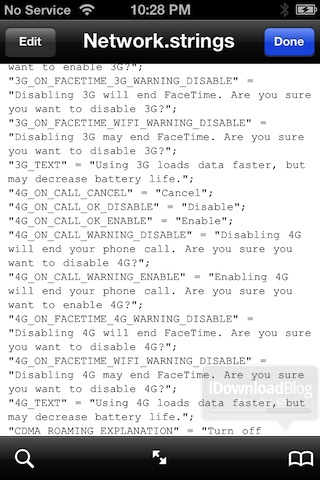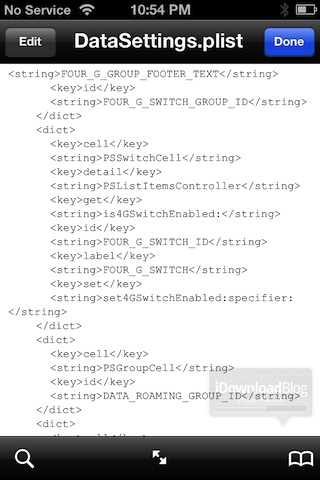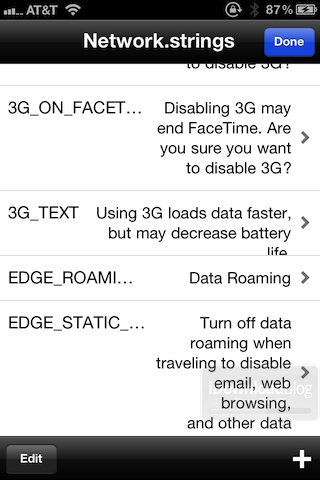As many Apple consumers, enthusiasts, die-hards and mobile technology analysts have anticipated for months, the company's sixth-generation iPhone, launching Fall 2012, will most likely include a 4G LTE radio with support for Verizon and AT&T's fourth-generation networks in the United States, among support for many other LTE networks worldwide. While the hardware feature has only remained within the scope of a much-wanted rumor for the past few months, several codes of string in Apple's new iOS 5.1 firmware have offered empirical evidence suggesting that an LTE-enabled iPhone is indeed in the works at the company's Cupertino, Northern California headquarters.
Image source: iDownloadBlog
The folks over at iDownloadBlog ran through some Data Setting strings found deep within iOS 5.1 and have gathered screenshots of several strings reading:
- “4G_ON_CALL_WARNING_DISABLE” = “Disabling 4G will end your phone call. Are you sure you want to disable 4G?”
- “4G_ON_FACETIME_4G_WARNING_DISABLE” = “Disabling 4G will end FaceTime. Are you sure you want to disable 4G?”
- “4G_TEXT” = “Using 4G loads data faster, but may decrease battery life.”
For those willing to discover evidence at home, these iOS 5.1 files can be found within the following directory:
- /System/Library/PreferenceBundles/MobileDataSettings.bundle/
The files are:
- /DataSettings.plist
- /English.lproj/DataSettings.strings

Image source: iDownloadBlog
As the discovery suggests, not only can iPhone users expect to be seeing 4G LTE support on future iterations of the device, but there is also the possibility of FaceTime video chat finally being supported over both 3G CDMA / HSPA+ and 4G LTE cellular connections.
The full discovery can be found here.




